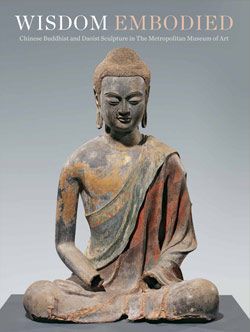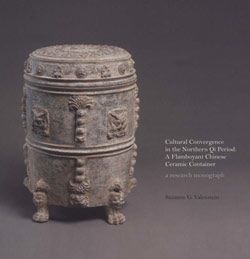Pagoda base with four Buddhas
The construction of small, square, pagoda-like shrines appears to have begun in China during the Northern Qi period, and flourished through the Tang dynasty (618–907). Comparisons with other examples suggest that this shrine once stood on a square, possibly stepped, base and was capped by either a domed or tiered roof. Its exterior walls, marked by prominent entryways, enclose a pillar with four Buddhas; although they can no longer be accurately identified, they likely represented the Buddhas most important to Chinese practice during the sixth century. Each wall is capped by a lintel that bears representations of multiple seated Buddhas. Paired dragons fill the upper registers and guardians and lions (many now missing) protect the entryways.
The shrine’s interior walls are carved with rows of multiple tiny Buddhas. Exhibiting variations in posture and clothing, they symbolize the immanence of many Buddhas in the cosmos. Numerous shrines of this type can be found in northeast China and are often associated with the remains of notable monks, indicating that they may have functioned as funerary monuments. However, the prominent central pillar in this example suggests that the shrine may have been used for visualization exercises, with a focus on these particular Buddhas.
Due to rights restrictions, this image cannot be enlarged, viewed at full screen, or downloaded.




